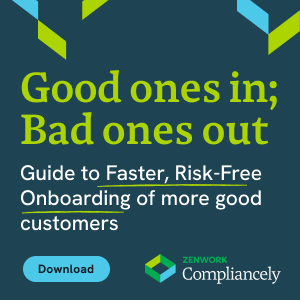
Compliance In 2022: A Note On CIP In Correspondence With Anti-Money Laundering (AML) Regulations
Just like a famous quote on success, compliance is not a destination, it’s a journey. From a realistic viewpoint, compliance is a never-ending strive that you have to keep up to stay in business. But the hassle is worth it. You can build on your goodwill, improve your credibility, and stay in the good books of the federal agencies, such as the IRS.
If you’re “compliant”, it means that you have agreed to put in the work to keep up with every protocol mandated by the government. While compliance is a very broad subject on its own, let’s narrow it down to AML compliance and more specifically, anti-money laundering regulations issued by the national and international monetary custodians.
AML compliance comes with a set of regulations that are mandatory and must be followed by financial institutions in the insurance, banking, and other enterprise industries that observe an influx of financial activity.
These regulations are in place to enable financial institutions to operate smoothly without interference from external forces that try to destabilize the financial ecosystem. Money laundering in its basal sense is a process of legitimizing cash received through illegitimate and/or unlawful sources and approaches.
The European Union recently published (Anti Money Laundering) AML5, a directive to stringently address the rampant rise in money laundering cases and its impact on the financial ecosystem.
Despite the advanced technology, mandatory KYC protocols, and the clever methodologies used by the financial institutions, money launderers find ways to legitimize large transactions through perfectly legitimate banks and other financial institutions.
Although the authorities detain the accused, the perpetrators behind these financial crimes are unknown due to the remoteness of the transactions and the devious methods used by money launderers.
So, when the global financial ecosystem is at the risk of being leveraged by a nexus of money launderers, financial institutions are advised by authoritarian monetary custodians and federal agencies to incorporate mandatory, stringent identity verification protocols. These are some simple yet powerful tools, and when implemented correctly, they can protect financial institutions from onboarding high-risk profiles.
This level of stringent profile “filtering” combined with the due diligence procedures used by entities make up the customer identification process.
The following will discuss in detail the customer identification process, its close connection with AML compliance, and ways to incorporate the procedure into the KYC and KYB processes.
What is CIP?
In a nutshell, the customer identification process is a procedure that is practiced to establish regulatory compliance. The identities of the incoming profiles along with the proof of identities are obtained to validate the accuracy of the information and the credibility of the profiles.
What Is AML Compliance?
Anti-Money Laundering compliance is a protocol followed by financial institutions to validate and verify the real identities of profiles in accordance with the anti-money laundering regulations. This includes verifying the profiles against authorized data lists, such as politically exposed people’s list, European sanctions lists, and other sanction lists.
Usually, a strict KYC/KYB verification process enables you to retain quality profiles and reject a high-risk profile (which is the whole point of AML compliance) listed in one or more of these data lists.
High-risk profiles could be individuals or entities that have a history of engaging in money laundering activities, terror financing, and related activities.
Primarily, a customer identification procedure must be defined and drafted in such a way that the KYC protocol rejects profiles with a pre-defined risk threshold.
Role of CIP in AML Compliance
The customer identification procedure allows financial entities to reduce the risk of onboarding profiles with an icky financial history or associations with sanctioned profiles.
For example, let’s say that you’re looking for a loan of $3 Million from a bank. Your credit history and your personal profile qualify you for the loan. However, if you happen to be friends with a person that has been on the federal watch list, such as the Designated Foreign Terrorists list, then it’s more likely that the bank will reject your profile.
It’s not just a subject of public record. It’s the mere association with an individual that has been designated by the federal agency as a threat to national security – which reduces your chances of approval with your loan application.
AML directives are in place to help protect financial entities that are being deceived by money launderers in the garb of customers. The protocols, identity validation, background screening, and stringent KYC verification processes are used as tools to vet a profile thoroughly and assess risk.
These investigations allow financial entities to mitigate risk and retain profiles with zero risk or negligible risk.
Why do businesses need to incorporate CIP to establish AML compliance?
The only thing that is pushing financial entities out of their comfort zone to vet the incoming customers is the risk of onboarding a potential money launderer or an individual that wants to finance terrorism.
It’s unfortunate that financial institutions are used as intermediaries in some cases for money laundering.
However, the modern AML directives have been drafted considering all the possibilities through which money launderers could disguise themselves as mere customers or harmless entities.
So, when a financial entity does not bind to the regulatory compliance measures, it risks onboarding a high-risk profile that could destabilize the financial ecosystem of that entity or even worse, provide a safe haven to money launderers.
And let’s not forget that the penalty for civil violations, such as not vetting a potentially high-risk profile, or continuing to associate with a sanctioned profile; it’s too high to ignore.
It’s not just the financial liability but the reputational damage, adverse media coverage, operational prohibitions, and even imprisonment that must be considered.
Here’s what you can do to reduce barriers to AML compliance
The best way to reduce the barriers to AML compliance is to strengthen the internal customer identification procedure.
Stringent KYC/KYB procedures make way for verifying the real identities of the profiles, giving insights to your identity validation investigations.
Compliancely, a real-time identity validation infrastructure, acts as an identity check powerhouse that powers your identity verification investigations with real-time checks.
Compliancely enables the following real-time identity checks for your entity.
- TIN & Name Match
- OFAC Watch List
- European Sanctions List
- Death Master File
- Specially Designated Nationals
- Politically Exposed People
- IRS Tax-Exempt Org. Search
- Foreign Account Tax Compliance Act (FATCA) List
- Address Validation
- Denied Persons List
- SOS Business Entity Search
- Consolidated Sanctions
- Arms Export Control Act
- Foreign Sanctions Evaders List
- Excluded Parties List System
- List Of Excluded Individuals/Entities
- Designated Foreign Terrorist Organizations
Financial institutions, banks, insurance agencies, educational institutions, and several other enterprise industries can make use of Compliancely’s real-time identity checks.
